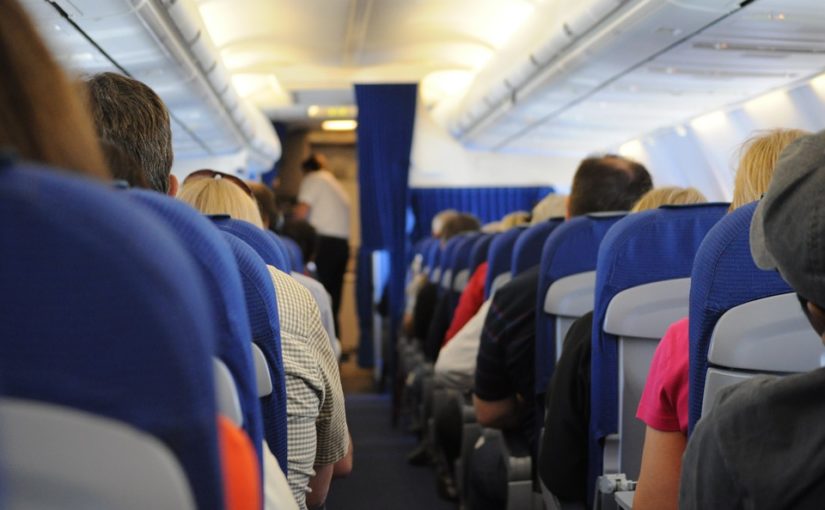Someone asks if exist the right of persons with disabilities to choose a seat nearby exit doors of the plane.

What we think about it?
If you travelled from an airport located in the territory of an EU Member State (Italy for example), the EU regulation 1107/2006 on the rights of passengers with disabilities in air transport (art. 1, No 2, scope) applies.
The purpose of this regulation is to establish a set of rules for the protection and assistance of persons with disabilities and persons with reduced mobility in aviation, both to protect them from discrimination and to provide them with assistance.
As a passenger with disabilities (blindness for example) according to the definition of disability of art. 2 (a), you are considered a person with reduced mobility.
This entails paying attention to security measures. Generally, air transport companies specify (for example on the website) that for safety reasons the seats in the row corresponding to the emergency exit cannot be assigned to passengers with reduced mobility.
Furthermore, additional requirements such as knowledge of English, age (greater than 15 years), availability to support on-board personnel, etc. may also be specified (NOTE: according to the ICAO (Doc. 7192 Training manual Part E-1), able-bodied passenger refers to passengers selected by crew members to assist in managing emergency situations if and as required, for example in opening doors or helping other passengers evacuate the plane).
I belief this does not imply an impossibility for you to find a place close to the exits. In fact, if your disability could cause an impediment about the rapidity of opening the emergency doors, this does not mean that for your personal safety you can’t sit nearby safety exit or on the corridor side seat, although not in the seats of the row corresponding to the exit.
As an additional security measure, the transport company is obliged to inform the passenger with disabilities about his rights (art. 14 Reg. 261/2004 and article 4 No 3, 5, 6 etc reg. 1107/2006) and on the assistance and security measures. For this reason, many companies, sometimes on request, provide informative material accessible to people with disabilities.
In the case of accompaniment with a trained dog, article 11 provides that the operational air carriers give precedence to persons with reduced mobility and to their conductor or certified accompanying dogs. This implies, in theory, the possibility of taking advantage of the seating in front of a bulkhead or otherwise corridor side, to accommodate more comfortably the animal.
Finally, depending on the disability is also expected that the air carrier or the tour operator impose the presence of a companion. This shows how important it is that there is a complete dialogue when you book the trip, to exclude complications during the provision of the service. On the other hand, I believe that the assessment of the need for accompaniment must be non-discriminatory and therefore reflects the real conditions of necessity.
In conclusion, it must be taken into account on the one hand that: Community intervention in the field of air transport should aim, among other things, to ensure a high level of protection for passengers and that air carriers should take account of the special needs of people with reduced mobility and their accompanying persons (whereas 1 and 19 EU regulation 241/2004), as well as it is also true that all citizens should be beneficiaries of the single market in air services; Persons with disabilities and persons with reduced mobility, due to disability, age or other factors, should therefore have the possibility of travelling by air on conditions similar to those of other citizens; Persons with disabilities and persons with reduced mobility have the same the rights of all other citizens to free movement, freedom of conduct and non-discrimination (whereas 1 and 4 regulation 1107/2004),
but on the other side, we must consider that:
The right of access to transport and non-exclusion for persons with disabilities and persons with reduced mobility shall find a limit in the justified safety reasons provided for by law (whereas 2 reg 1107/2006 and art. 4 regulation 1107/2006).
For all the reasons above I think that the airline and the tour operator should have kept you more informed about the security and assistance measures.
I also believe that you have all the right to take a seat on the corridor side and near the exits even if excluding the row to sit more near the exit.
Generally, I recommend that every time we don’t receive adequate information, we must react positively trying to be proactive in requesting this information before the transport service is carried out, to avoid subsequent complications.
My studies (tourism and accessible transport and the rights of people with disabilities) and what I hear from people, push me more and more to the realisation of mission for more information and training of the personnel of the transport companies, just like required by the European legislator.
Dario Imperatore
dario.imperatore@unicam.it

